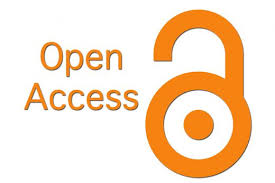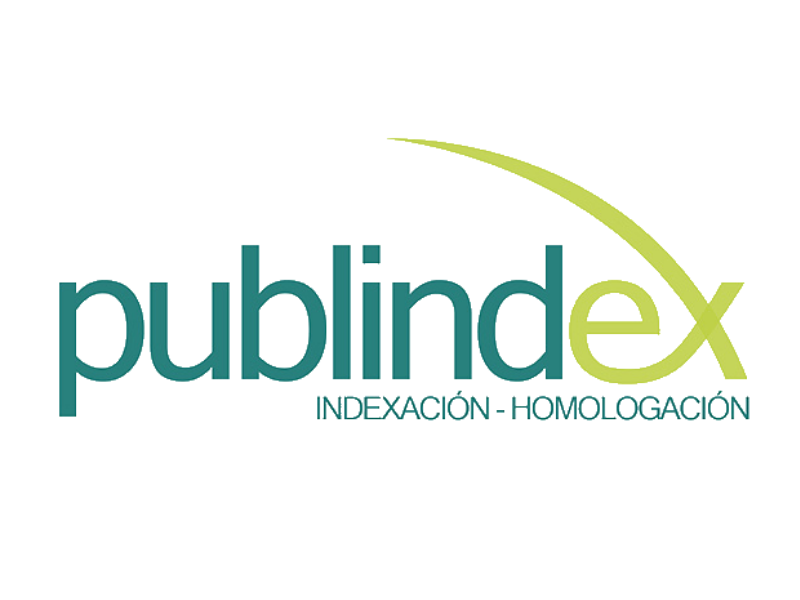Clinical and epidemiological characteristics of patients undergoing transfusion
Características clínicas y epidemiológicas de pacientes sometidos a transfusión
![]()
![]()

Show authors biography
Introduction: blood products transfusions are a common practice, particularly in multiple life-threatening situations. Its usefulness is based on three aspects, that is, being beneficial for patients, improving circulatory volume, rheology and oxygen transport. Objective: to describe the clinical and epidemiological characteristics of patients who underwent transfusions in two high complexity institutions in Medellín, Colombia. Methodology: a descriptive, retrospective cross-sectional, observational study including patients who required blood products transfusion. The source of information was a review of medical records. The JAMOVI program was used for analysis, estimating univariate absolute and relative frequencies, median and interquartile ranges. Results: 458 clinical records were included, with female predominance 60.7% (278), and median age of 49 years. The main reason for the transfusion was hemorrhage classified as non-massive and non- obstetric in 25% (114/458), followed by obstetric hemorrhage in 24% (108/458) and 19% (87/458) were conducted in the context of resuscitation. Thirteen percent (13%) were performed for therapeutic apheresis and transfusion related adverse effects were identified in only 0.7% of patients. Discussion: the main objective of blood products transfusion is optimizing patient´s hemodynamic status. In this study the mean hemoglobin results increased 1.6 g/dL, after the first transfusion, in contrast with other reports in which the increase was lower. The main reason for the transfusion was non-massive and non-obstetric hemorrhage in 25%. Transfusion practices and patient profiles are consistent with those reported in prior research studies. Conclusion: blood products transfusion is a common procedure in clinical practice, in situations such as anemia and hemorrhage syndromes. It is indicated if the benefits outweigh the risk. This study is limited by its retrospective nature, which conditions information access and do not allow result extrapolation to a broader population.
Article visits 153 | PDF visits 36
Downloads
- Crombie N, Doughty HA, Bishop JR, Desai A, Dixon EF, Hancox JM, et al. Resuscitation with blood products in patients with trauma-related haemorrhagic shock receiving prehospital care (RePHILL): a multicentre, open-label, randomised, controlled, phase 3 trial. Lancet Haematol. 2022;9(4):e250-61. https://doi.org/10.1016/S2352-3026(22)00040-0
- Holcomb JB, del Junco DJ, Fox EE, Wade CE, Cohen MJ, Schreiber MA, et al. The prospective, observational, multicenter, major trauma transfusion (PROMMTT) study: comparative effectiveness of a time-varying treatment with competing risks. JAMA Surg. 2013;148(2):127-36. https://doi.org/10.1001/2013.jamasurg.387
- Krishna A, Subramanian A, Chaurasia R, Sinha TP, Pandey S, Malhotra R. Transfusion Practices in Severely Injured Patients at a Level 1 Trauma Center. J Emerg Trauma Shock. 2024;17(2):84-90. https://doi.org/10.4103/jets.jets_58_23
- Kenyon RM, Leighton JL. Control of Haemorrhage in Orthopaedic Trauma. J Clin Med. 2024;13(14):4260. https://doi.org/10.3390/jcm13144260
- Holcomb JB, Tilley BC, Baraniuk S, Fox EE, Wade CE, Podbielski JM, et al. Transfusion of plasma, platelets, and red blood cells in a 1:1:1 vs a 1:1:2 ratio and mortality in patients with severe trauma: the PROPPR randomized clinical trial. JAMA. 2015;313(5):471-82. https://doi.org/10.1001/jama.2015.12
- Sperry JL, Luther JF, Okonkwo DO, Vincent LE, Agarwal V, Cotton BA, et al. Early GFAP and UCH-L1 point-of-care biomarker measurements for the prediction of traumatic brain injury and progression in patients with polytrauma and hemorrhagic shock. J Neurosurg. 2024:1-10. https://doi.org/10.3171/2024.1.JNS232569
- Raval JS, Griggs JR, Fleg A. Blood Product Transfusion in Adults: Indications, Adverse Reactions, and Modifications. Am Fam Physician. 2020;102(1):30-8
- Ellingson KD, Sapiano MRP, Haass KA, Savinkina AA, Baker ML, Chung KW, et al. Continued decline in blood collection and transfusion in the United States-2015. Transfusion. 2017;57(2):1588-98. https://doi.org/10.1111/trf.14165
- Balafas S, Gagliano V, Di Serio C, Guidugli GA, Saporito A, Gabutti L, et al. Differential impact of transfusion guidelines on blood transfusion practices within a health network. Sci Rep. 2023;13(1):6264. https://doi.org/10.1038/s41598-023-33549-6
- Shaw RE, Johnson CK, Ferrari G, Zapolanski A, Brizzio M, Rioux N, et al. Balancing the benefits and risks of blood transfusions in patients undergoing cardiac surgery: a propensity-matched analysis. Interact Cardiovasc Thorac Surg. 2013;17(1):96-102. https://doi.org/10.1093/icvts/ivt124
- Luangwaranyoo A, Suksintharanon M, Tangadulrat P, Iamthanaporn K, Hongnaparak T, Yuenyongviwat V. Factors for Blood Transfusions Following Hemi Hip Arthroplasty for Patients With Femoral Neck Fracture. Geriatr Orthop Surg Rehabil. 2020;11:2151459320972993. https://doi.org/10.1177/2151459320972993
- Higuita Gutiérrez LF, Zuluaga Gómez L, Tapie Piarpuezan E, Flórez Duque J. Prevalencia de reacciones adversas transfusionales y su asociación con características clínicas en un banco de sangre en Medellín. Hech Microb. 2022;12(2):1–11. https://doi.org/10.17533/udea.hm.v12n2a05
- Ministerio de Salud y Protección Social. Boletín de prensa 154 de 2023. Cada año se efectúan cerca de 1’500.000 de transfusiones a más de 390.000 pacientes. Bogotá: Boletín de Prensa No 154 de 2022; 2023.
- Shander A, Gross I, Hill S, Javidroozi M, Sledge S. College of American Pathologists, et al. A new perspective on best transfusion practices. Blood Transfus. 2013;11(2):193-202. https://doi.org/10.2450/2012.0195-12
- Wangi Ngoy Y, Nganga Nkanga MS, Ndelembo Baina G, Katende Katende A, Bikaula Ngwidiwo J, Mpudi Massamba L, et al. Critical Assessment of Transfusional Practices in the Obstetrics and Gynecology Department At the University Hospital of Kinshasa. J Blood Med. 2023;14:221-231. https://doi.org/10.2147/JBM.S381016
- Ferraris VA, Hochstetler M, Martin JT, Mahan A, Saha SP. Blood transfusion and adverse surgical outcomes: The good and the bad. Surgery. 2015;158(3):608-17. https://doi.org/10.1016/j.surg.2015.02.027
- Şanal L, Günaydın S, Tatar M. Cost-Effectiveness and Budget Impact Analyses of Patient Blood Management in a Cardiovascular Surgery Department at Ankara Bilkent City Hospital in Turkey. Adv Ther. 2024;41(2):716-729. https://doi.org/10.1007/s12325-023-02733-5
- Curley GF, Shehata N, Mazer CD, Hare GM, Friedrich JO. Transfusion triggersfor guiding RBC transfusion for cardiovascular surgery: a systematic reviewand meta-analysis. Crit Care Med. 2014;42(12):2611-24. https://doi.org/10.1097/CCM.0000000000000548
- Okuno T, Kunisawa S, Fushimi K, Imanaka Y. Intra-operative autologous blood donation for cardiovascular surgeries in Japan: A retrospective cohort study. PLoS One. 2021;16(3):e0247282. https://doi.org/10.1371/journal.pone.0247282
- Vamvakas EC, Blajchman MA. Transfusion-related mortality: the ongoing risks of allogeneic blood transfusion and the available strategies for their prevention. Blood. 2009;113(15):3406-17. https://doi.org/10.1182/blood-2008-10-167643
- Oh TK, Song IA. Perioperative Transfusion and Mortality for Cardiovascular Surgery: A Cohort Study Based on Population in Republic of Korea. J Clin Med. 2024;13(8):2328. https://doi.org/10.3390/jcm13082328
- Jha S, Patel KV, Bukhari A. Chronicle of Hypoxemia: Transfusion-Associated Circulatory Overload Versus Transfusion-Related Acute Lung Injury. Cureus. 2022;14(9):e28712. https://doi.org/10.7759/cureus.28712
- Diaz D, Melians S, Padrino M, González I, Urquiola M. Caracterización clínico- epidemiológica de la transfusión. Rev Ciencias Médicas. 2016;20(6):32-40.
- Roubinian N, Plimier C, Woo J, Lee C, Bruhn R, Liu V, et al. Effect of donor, component, and recipient characteristics on hemoglobin increments following red blood cell transfusion. Blood 2019;134(13):1003–13. https://doi.org/10.1182/blood.2019000773
- D'Alessandro A, Hod EA. Red Blood Cell Storage: From Genome to Exposome Towards Personalized Transfusion Medicine. Transfus Med Rev. 2023;37(4):150750. https://doi.org/10.1016/j.tmrv.2023.150750
- Gil M, Garcia A, Romero A, Arias L, Prevot V, Sorá D. Epidemiología de las transfusiones en el Hospital Militar Central “Dr. Carlos J. Finlay”. Revista Cubana de Hematol, Inmunol y Hemoter. 2015;31(4):444-51.
- Valencia W, Villada I, Calero SM, Muñoz DA, Varela PA, Villada L. Análisis de la práctica transfusional en un hospital de segundo nivel en Cali, Colombia entre junio y noviembre de 2010. Méd.UIS. 2012;25(2):107-12.












